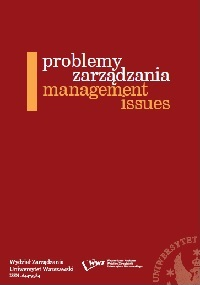What Really Counts? – Factors Related to Effectiveness of Students’ Team in Social Projects
What Really Counts? – Factors Related to Effectiveness of Students’ Team in Social Projects
Author(s): Aleksandra SpikSubject(s): Psychology, Business Economy / Management, Higher Education , Social psychology and group interaction, Organizational Psychology
Published by: Wydawnictwo Naukowe Wydziału Zarządzania Uniwersytetu Warszawskiego
Keywords: team effectiveness; teamwork; team assessment;
Summary/Abstract: The aim of the study was to explore the factors that determine students’ team effectiveness. The study investigated the relations between three types of team effectiveness (performance, behavior, attitude) and five attributes of teamwork: common purpose, communication and problem resolution, role clarity and psychological safety. In the study, quantitative research was performed among undergraduate Polish students of management who had to conduct a real non-profit project that would tackle a social issue. The questionnaire used in the study was specifically developed. The results show that three components of team effectiveness have different patterns of predictors. The perceived quality of goal achievement (TE Performance) depends on common purpose, role clarity and communication and problem resolution whereas willingness to continue teamwork (TE Behavior) depends on role clarity and psychological safety. The study contributes to understanding which team attributes are crucial for team effectiveness and how to assist students to become excellent team players. The study offers guidelines regarding the type of team experience that is necessary to foster commitment to team work among students. Moreover, acknowledging that effectiveness is more than goal attainment, the study shows the most beneficial attributes of teams. In the presented study, unlike in many studies concerning students’ teams, all of the participants had to conduct a real non-profit project that would tackle a social issue of their choice. All the projects had to meet rigid criteria of completion and timelines. Moreover, the sample was homogenous in terms of previous teamwork experience, level of project management knowledge, age, level of support from third parties during the project. The research provides a unique opportunity to investigate experience of a relatively large sample that shares similar teamwork experience in a clearly defined setting.
Journal: Problemy Zarządzania
- Issue Year: 17/2019
- Issue No: 6 (86)
- Page Range: 158-176
- Page Count: 19
- Language: English

